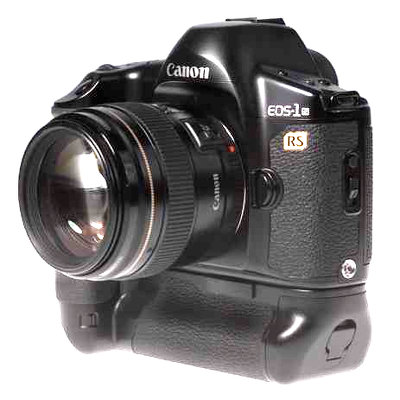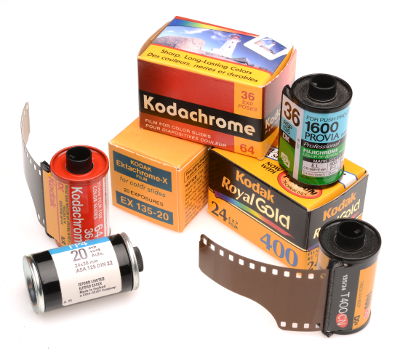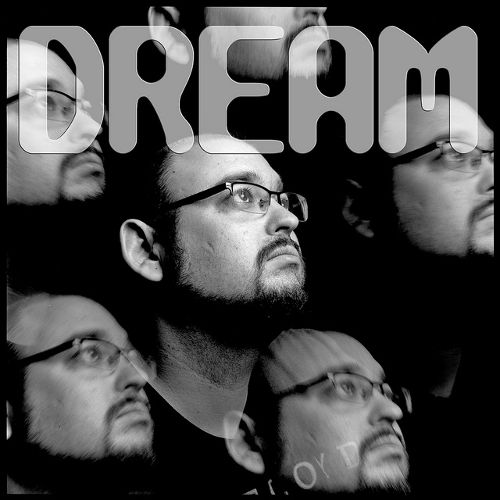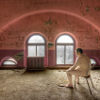CANON EOS-1N RS REVIEW

Canon EOS-1n RS
| Type: | SLR |
| Medium: | 35mm Film |
| Image size: | 24x36mm |
| Lens: | Canon EL mount |
| Flash: | Hot shoe |
| Sync Type: | X |
| Sync Speed: | 1/250s |
| Origin: | Japan |
| Year: | 1995-2001 |
| Street price: | $300 |

35mm Film
INTRODUCTIONThe Canon EOS-1n RS is a professionnal grade 35mm film SLR camera made in Japan by Canon between 1995 and 2001. BEST SUITED FOR:
PERSONAL NOTESThe Canon EOS-1n RS is a special version of the more often seen EOS-1n. The RS has a fixed mirror, and a permanently attached battery grip, which enables the camera to shoot at 10 frames per second. Also, there is no black out during the exposure, because the mirror is semi-transparent. It gets a little time to get used to. This was a nice camera for action and sports photographers, but of course, there were limitations. In RS mode (fast mode) the auto focus can only be in "one shot", so the focus is done only before the first frame of a burst. Cameras today goes to even faster frame rates, and do not even need a pellicle mirror to get meter readings and focus tracking between shots. I like the EOS-1n RS, it's a nice beast, with some subtle advantages. The fact that you always see your subject even when the exposurure is being done, is a nice advantage. But it can sometimes be disorienting, from time to time, when shooting at full aperture, not only the image is always there, but it does not even dim. So sometimes, when I take a photo, I hear the curtains go to work, but I sometimes wonder if I did take the photo as there is no black out. It's a bit strange. The fact that the mirror does not move, means that it's a bit less noisy. Well, it's not a Leica, but for a motorized SLR, it's pretty good. Also, because there is no black out, you can easily see if your camera shakes during the exposure. CONCLUSIONThe Canon EOS-1n RS is a special beast that every camera enthusiast should experiment at least once. If you want to experiment the pellicle mirror but without the fast speeds, you can go for a Canon EOS RT. PHOTO SAMPLESVERDICT:
4 FLASHBULBS    
|
CONTACT












